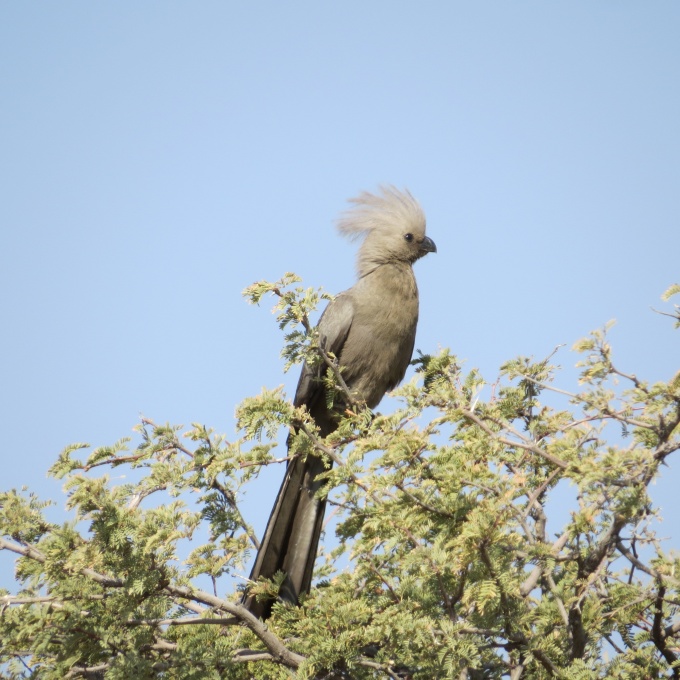A Wild Cat Walk at Hammerstein Lodge
/I petted a leopard today and a cheetah! We hadn't really expected our “cat walk” to be quite as up close and personal as it turned out to be. Let me backtrack a bit. We couldn't get reservations near Sossusvlei as we'd hoped, so instead we opted for the Hammerstein Lodge, about 60 km (36 miles) south. It was on the way and they mentioned a “cat walk” on their website page. We thought it might be a good night's stop. We knew when we'd arrived by their unique entrance gate.
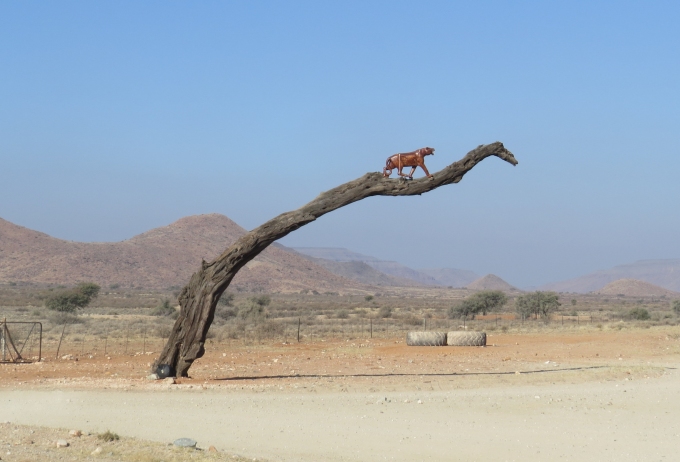
The lodge was a kilometer or so off the road. A herd of sheep was meandering up the road as we entered and we slowly shooed them out of the way to head up to the lodge reception.
As we made our way to the parking area, we were a bit dismayed by the number of tour buses and vans in the parking lot. We checked in and were pointed in the direction of our room … quite a ways up the hill and pretty isolated from the rest of the lodge. Maybe that was good. The receptionist asked if we were having dinner with the “group”. Ummm … we'd had a big lunch and decided to forgo the buffet featuring local beast being devoured by 60 or so German tourists. He asked if we were interested in the cat walk … a tour was just leaving. No, we'd prefer the morning, if possible. “How about 7:30? You'll probably be the only ones on the tour.” Yup, that's what we wanted. We headed to our room, then wandered around the property for a bit. There was a springbok named Honey that roamed about freely and a friendly oryx in an enclosure that came right up to us and offered his nose for a scratch.
We were up early with the sun and wandered down for coffee and breakfast. Arniston met us right on time and we set off to see the cats … just us and the guide. We walked about 200 meters and came upon a large enclosure and there was Lisa, the leopard. The Hammerstein's son, Matthew, had adopted Lisa when she was a cub and she lived with Matthew, in his room, for over a decade. She came up to the fence immediately and Arniston began stroking her fur. Really? We can pet her? “Sure, just be careful. She can grab you with her paws.” Petting a leopard … what a thrill. Her fur was soft. She purred loudly as we stroked her. We walked the length of her large enclosure and she followed us like a puppy, rolling in the sand, rubbing against the fence, looking for, and receiving, attention.
At the next enclosure, Arniston opened the gate and we walked right inside to meet the caracals. Caracals look like very large domestic cats with long pointy ears, like a lynx. They're usually nocturnal, so we had to hunt for them. Romeo and Juliet were napping under a camelthorn bush and barely visible behind their camouflage. Again, these were rescue cats and though we prefer seeing animals in the wild, we'd probably never would have seen this species of cat at all.
Next we headed to see the cheetahs. Once again Arniston unlocked the gate. “We're going inside?”, I asked incredulously. “Yes. You may pet them if they come up to you. They are quite friendly.” Oh, my! Take a look at this short video.
As cubs, Oscar and Wilde were allowed to roam the grounds freely, however once they discovered that the farm's sheep made a tasty meal, they were confined to quarters. We stayed for quite awhile, observing, photographing. Oscar and Wilde were pleasant, but aloof. Arniston was knowledgeable and never hurried us in the least, although I doubt he would have let us spend the day as we would have preferred
As we exited the cheetah enclosure, Lisa the leopard, in the adjoining enclosure jumped up next to David and began rubbing against him, much like a domestic cat would. He petted her and she stuck out a paw, without claws, in a playful gesture. Perhaps, David reminded her of her old master, Matthew, but she certainly was attracted to David. We always found it difficult to distinguish a cheetah from a leopard … all those spots ... but seeing them next to each other, it was now easy to tell them apart.
Time to get back on the road. From cats to castles … we're on our way to Duwisib Castle. Read about this castle in the desert in tomorrow's blog. It's Just A Little Further.


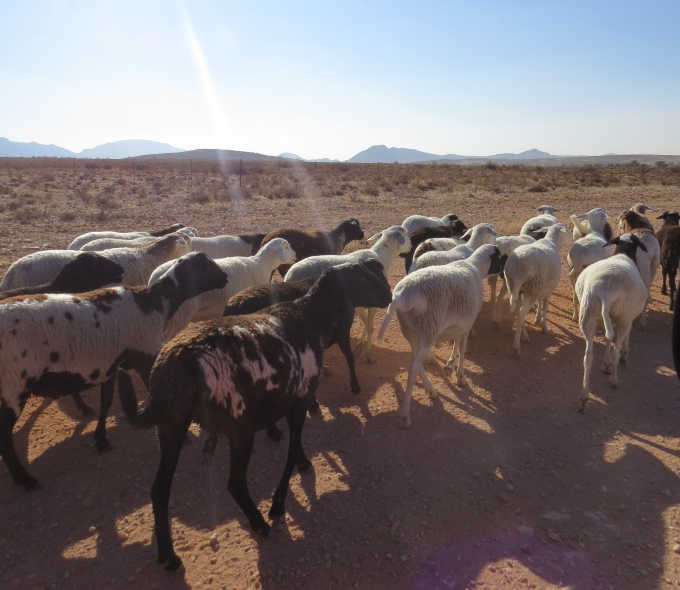

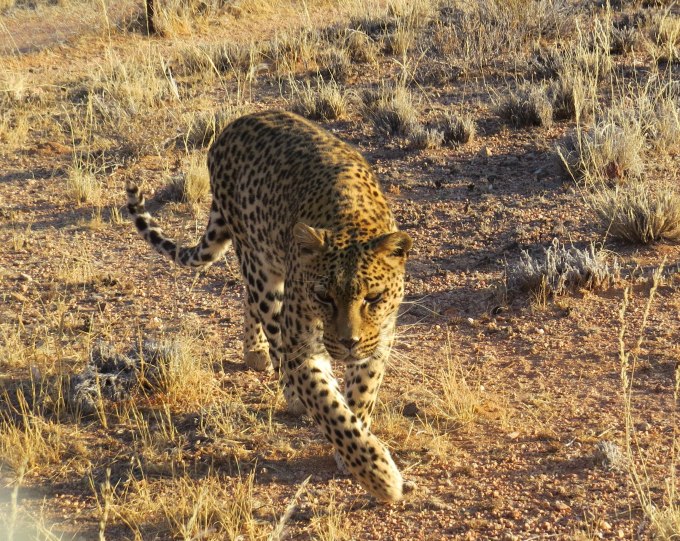
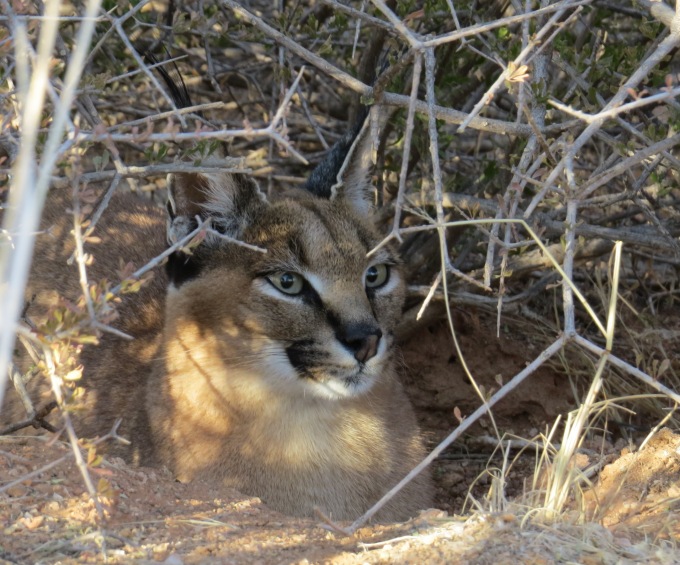

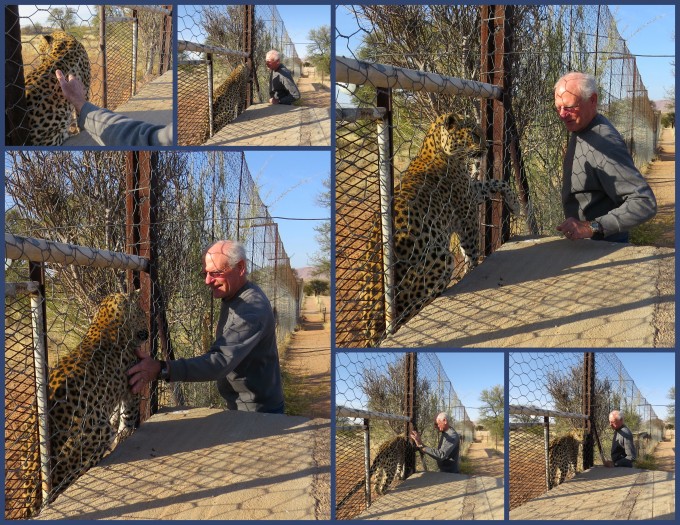
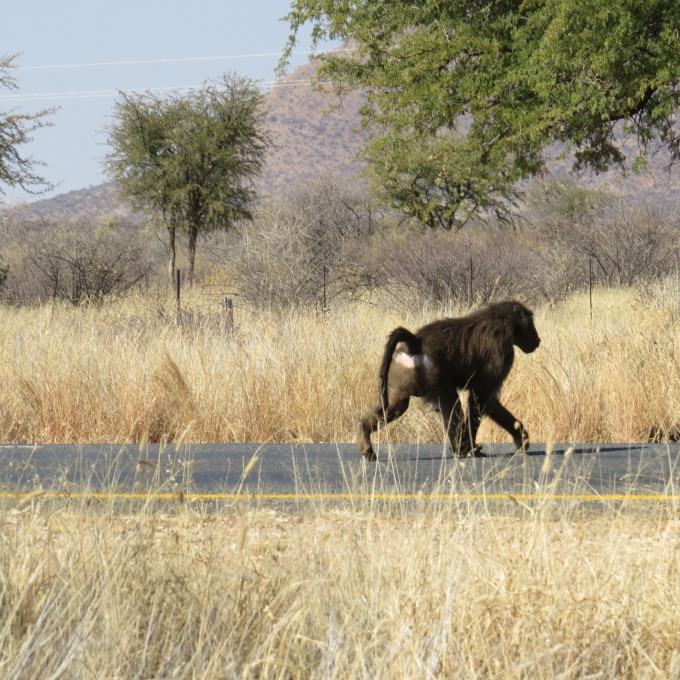
 . We stopped to take a photo on the way back and drove around the shop grounds, which were pretty bizarre, but the shop was unfortunately closed.
. We stopped to take a photo on the way back and drove around the shop grounds, which were pretty bizarre, but the shop was unfortunately closed.



